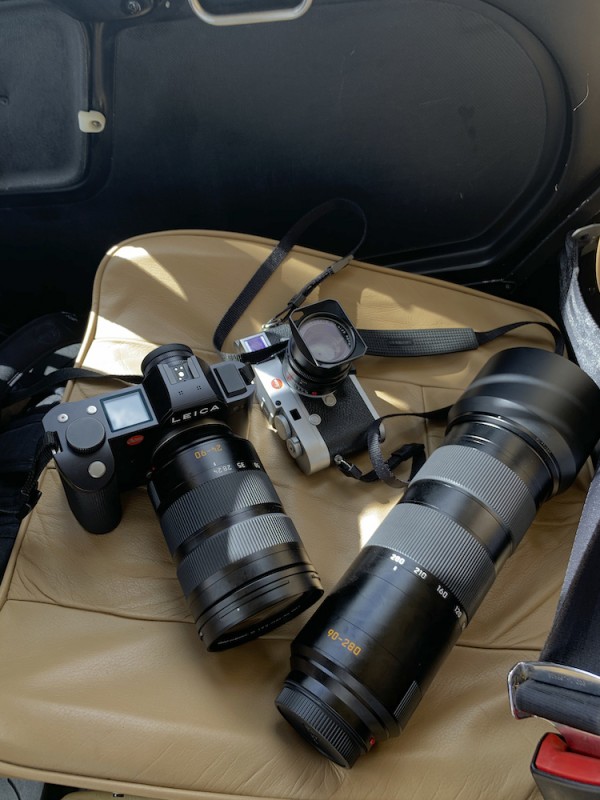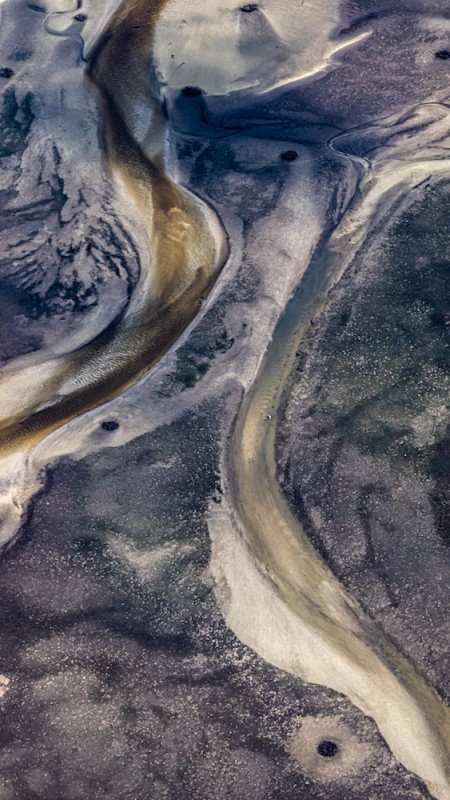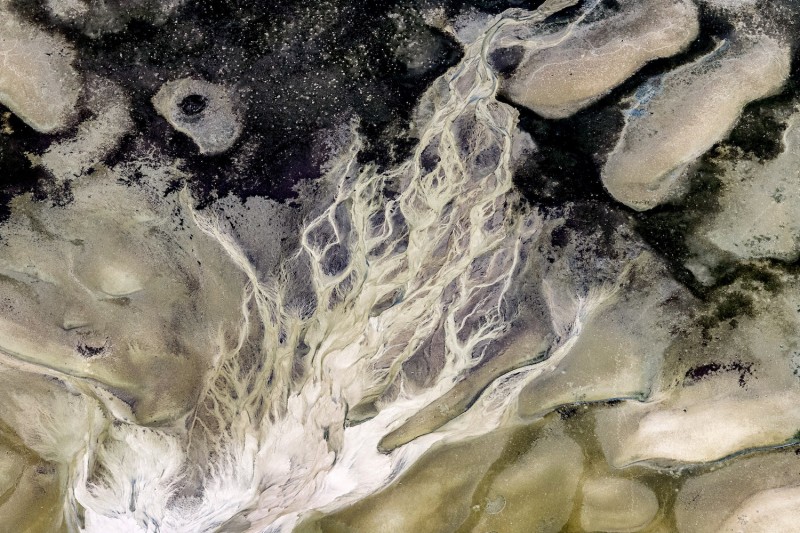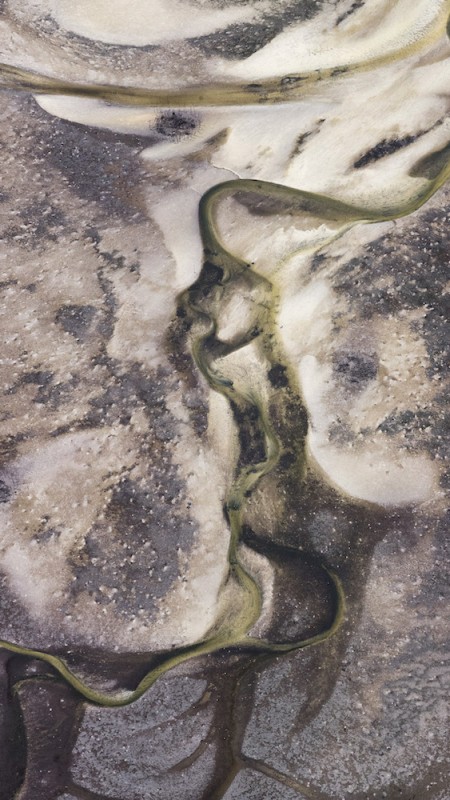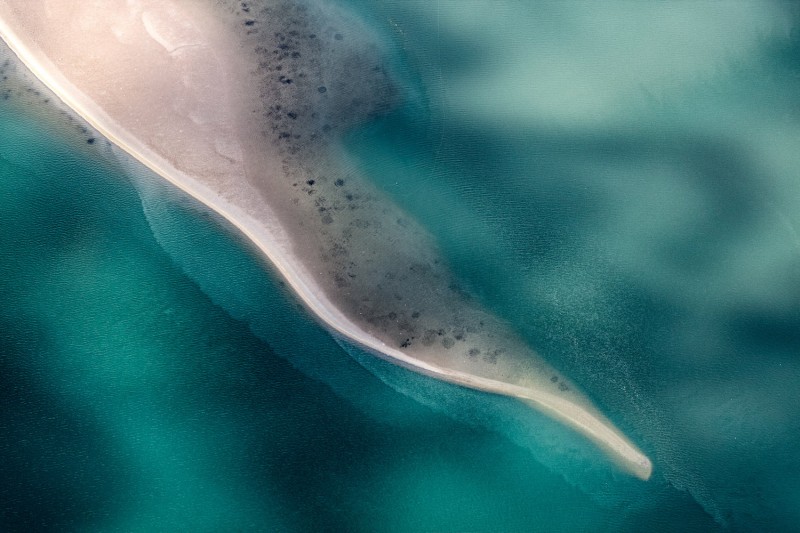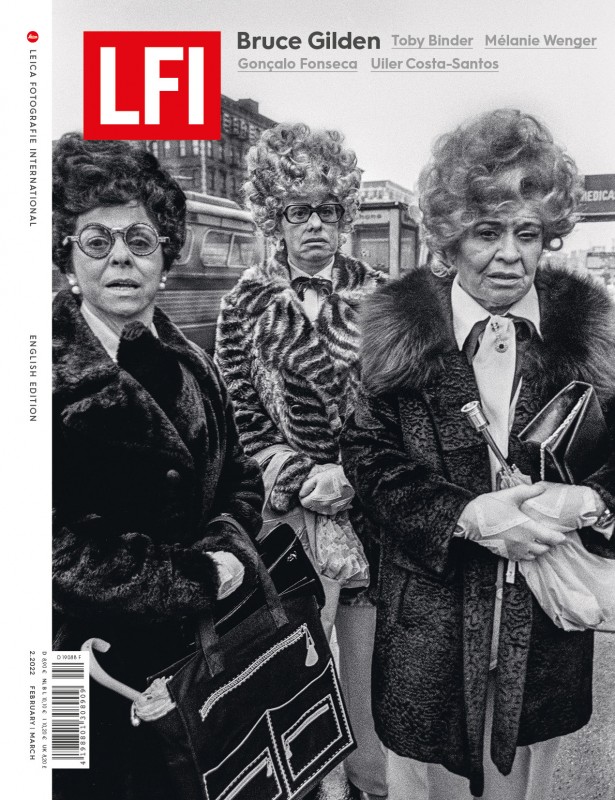Behind the Scenes: Sizígia – The Cosmology of the Low Tide
Behind the Scenes: Sizígia – The Cosmology of the Low Tide
Uiler Costa-Santos
February 25, 2022
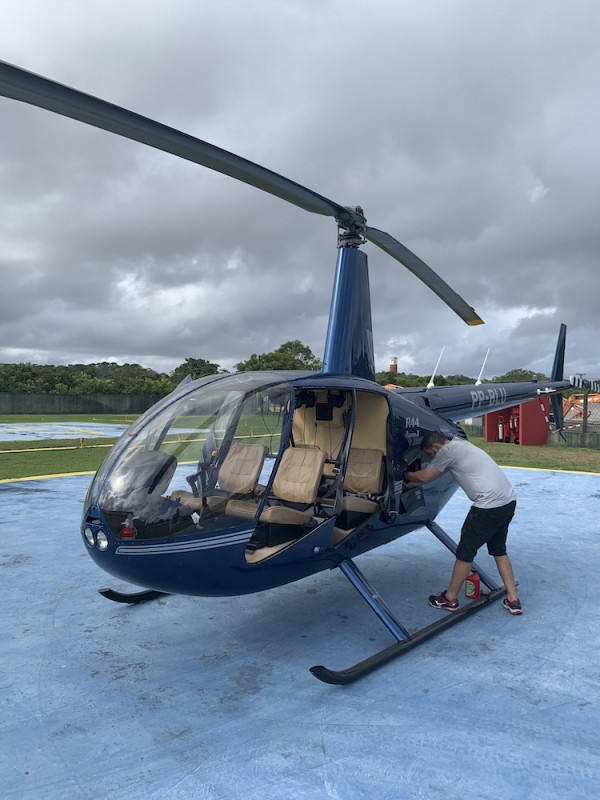
LFI: What were the challenges of shooting from a helicopter? What was your photographic process like?
Uiler Costa-Santos: The production of images starts with the evaluation of the weather forecast: the syzygy, the occurrence of low tide, happens between 8 and 11am, and between 3:30 and 5pm. At these times the light is softer. I try to fly when the sky is open and there is little humidity in the air: under these conditions there is greater visibility. The search for the images begins in All Saint's Bay, the regions of Barra do Paraguaçu and Salinas das Margaridas, the coast of Itaparica Island, the Itaparica channel in the vicinity of Caixa Prego, and the mouth of the Jaguaripe River. Departing from these sites, I fly up to two hours in length. Routes are, in most cases, circular, with the intention of making the most of the time. On these field visits I take two cameras: a Leica M and a Leica SL with focal length lenses ranging from 24mm to 280mm. Concentration and attention are important tools in this process; we work at heights ranging from 150 to 3000 feet. Not too high and not too low. Every 10 minutes I check how much flight time we still have with the pilot, and how much time we will need to return to base. Although wonderful, flying is a tense and tiring activity, since flying in a helicopter to take pictures is the second riskiest type of flight there is: second only to rescue missions.
Did you know which motifs awaited you from the air beforehand?
I didn't know. In a way, the reasons were revealing themselves. When I started photographing this region in moments of syzygy, I understood that, due to its grandeur, I would have to deal with what I saw in chapters, which we could call poetic lines.
What do you need to bring to a shoot of this kind? How do you prepare? I usually carry two cameras: an M10 and an SL and four lenses. For the Leica M, the Leica Summilux-M 35 f/1.4 ASPH and Leica APO-Telyt-M 135 f/3.4. For the SL, the Leica Vario-Elmarit-SL 24–90 f/2.8–4 ASPH and the Leica APO-Vario-Elmarit-SL 90–280 f/2.8–4. In addition to the cameras and lenses, I carry eight memory cards and extra batteries for each camera as a backup. One day before the flight I check that everything's okay: clean lenses, charged batteries and empty memory cards. I try to rest and concentrate, so as to be physically and emotionally present in the experience. I always reflect on what I can extract from this experience; how I can learn from this process and how to share it through my images.
How do you find working with these two cameras?
It’s a truly unique experience! I never imagined that I could find such versatile and practical equipment for my jobs. There’s such magic about these cameras that makes the experience of using them extremely pleasurable. They work as an extension of my body, allowing me to enjoy the moments I photograph to the fullest. When I first started shooting with a Leica, the impression was as if I had found something I’d been always looking for: a camera that allowed me to be in tune with nature and behold the essential. I love its simplicity and objectivity. I also need to emphasize the versatility of the SL and SL2! Not to mention the quality of the images, which are unbeatable. I can’t imagine a better tool for my photography work right now!
What is it like to look at the earth from above?
That's a good question! There is an opportunity, an event, that takes place in this state of suspension. At that precise moment, we are required to get in tune with nature and, as much as we try to separate man from nature, we are forced to experience an inner plunge that makes us realize that we are a single, living organism. From above we can feel the earth and everything that’s connected.
LFI 02.2022+-
Find out more about Sizígia in LFI magazine 02.2022. More
Uiler Costa-Santos+-
Uiler Costa-Santos (1983) is a visual artist and educator in the city of Salvador / BA, where he lives and works. His research proposes, through photography and the study of images, an interlocution between the imaginary of the landscape and the policies of redistribution of the sensitive by the abstraction. He has collaborated with institutions such as National Geographic Brazil and National Geographic Traveller UK, the Four Seasons, and Salvador's Tourism Board, among others. He is a guest columnist for the Iphoto Channel and the Portuguese blog Fotografia DG and he has been teaching photography courses with an emphasis on technique and poetic research, since 2015. More



